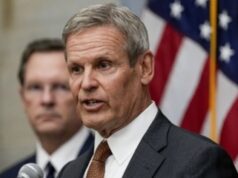India to achieve economy of INR 850 Kharab Soon

By early this year, the United Kingdom will surely be feeling happy and relieved that the emerging economic giant India is likely to agree on a comprehensive Free Trade Agreement (FTA) with this Brixit nation. When this happens, this will be the first FTA which a member of the G-7 club has been able to negotiate with India.
The above is no mean feat for United Kingdom, which has been annoying India on many accounts…be its MP commenting on Kashmir, Visiting Paki Occupied Kashmir, Khalistani referendum, sheltering economic criminals etc etc.
India had earlier outright refused the signing of the RCEP( Regional Comprehensive Economic Partnership Agreement )which happens to be the Worlds Free Trade Area comprising ASEAN countries, Japan, Australia, New Zealand, China and South Korea. Instead it went ahead to sign and implement a FTA with United Arab Emirates and has recently FTA between India and Australia has also been implemented.
In May this year, the Comprehensive Economic Partnership Agreement (CEPA) between India and the United Arab Emirate (UAE) came into effect. It is important to note that UAE is currently India’s third-largest trading partner with bilateral trade in 2019-20 valued at INR 50 Kharab( US$ 59 billion).
The UAE is also India’s second largest export destination, with exports valued at approximately INR 25 Kharab for the year 2019-20. The UAE is also the eighth largest investor in India, with an estimated investment of INR 15 Kharab, whereas Indian investments in the UAE are estimated at around INR 73 Kharab. The CEPA is expected to increase the bilateral trade in goods to INR 85 kharab within five years of the signing and increase trade in services to INR 12 kharab.
CEPA, in comparison to FTA, is more comprehensive than an FTA. While a traditional FTA focuses mainly on goods; a CEPA is more ambitious in terms of a holistic coverage of many areas like services, investment, IPR, government procurement, disputes etc.
The FTA between India and Australia, which was signed in April, came into force from 29 December and it is likely to double bilateral commerce to INR 42 Kharab in around five years, as it aims to provide duty-free access to Indian exporters of over 6,000 broad sectors, including textiles, leather, furniture, jewellery, and machinery in the Australian market.
As per official sources already six rounds of talks between the two, with the last being held on 16 December, have been completed, with the seventh round scheduled for early this year. As usual the Brits were trying to be clever but they have found out to their chagrin that now it’s a different kind of India to be negotiated with. So now during the seventh round hopefully “minor” details will be ironed out. In the last round of discussions, officials covered 11 policy areas over 28 separate sessions.
These FTAs and Comprehensive Economic Partnership Agreement (CEPA) are being directly monitored at the level of the Prime Minister’s Office (PMO), which is pushing hard to achieve the task of India becoming a INR 850 Kharab (USD $5 trillion ) economy in US$ terms by 2025.
Earlier in June, even the European Union (EU) after realizing the overall situation against China, restarted the FTA discussions with India after a gap of eight years. The Swedish foreign trade minister Johan Forssell after Sweden took over the Presidency of the 27 nations grouping earlier this month is very hopeful of the FTA with India being completed by end 2023. The Indian Commerce Minister Piyush Goyal said with a smile that he too was hopeful.
Officials in the Commerce Ministry have indicated that even Canada was working on a similar FTA with India. This was also going to be finalized by mid this year, with five rounds of talks on the issue already taking place. However a major irritant which may come up is the growing Khalistani activities in Canada.
The commerce ministry has also revived FTA talks with the six-member Gulf Cooperation Council (GCC), which is one of India’s largest trading partners. Earlier, talks held in 2006 and 2008 had failed to arrive at a mutually agreed consensus. These talks are at the initial stage, but with India pushing for it, and GCC officials being eager, both sides are engaged in reaching an agreement by this year’s end.
The GCC, a union of six countries in the Gulf region, including Saudi Arabia, United Arab Emirates (UAE), Qatar, Kuwait, Oman, and Bahrain, is India’s largest trading partner with bilateral merchandise trade in 2021-22 standing at INR 130 Kharab and services trade at INR 12 Kharab.
In February last year, India and Mauritius signed a CEPA, the first trade agreement signed by India with a country in Africa. The said CEPA came into force on 1 April 2021. Earlier, this year, Goyal stated that India was going to review the “long-over-due” FTA that was signed with Japan in August 2011 citing trade imbalance. Recently Goyal, while responding to queries about FTA with New Zealand, said that India does not presently have the time to tend to with “minor” trade partners.
Significantly, when India walked out of the China-led Regional Comprehensive Economic Partnership (RCEP) in November 2020, it was described by global watchers as a “disastrous” and doomsday step by India.
Two years later, India has a bilateral agreement with 13 of the 15 RCEP countries. The only country with which India does not have an agreement deliberately is China and New Zealand. Where as G7 and most of G20 were ready to lick the Chinese boots.
India is not “desperate” for a FTA even with the United States. As India will engage from the point of equality only and cannot be dictated by anyone. So unless Indian concerns are adequately addressed, we are not going to sign a FTA or a CEPA.
The problem as far as the FTA with the US is concerned is that it is not addressing the imbalance of trade that will primarily arise in the present form. They have their domestic reasons. However, they also need to understand that to counter the threat from China, they badly need to have a good trade relationship with India.



